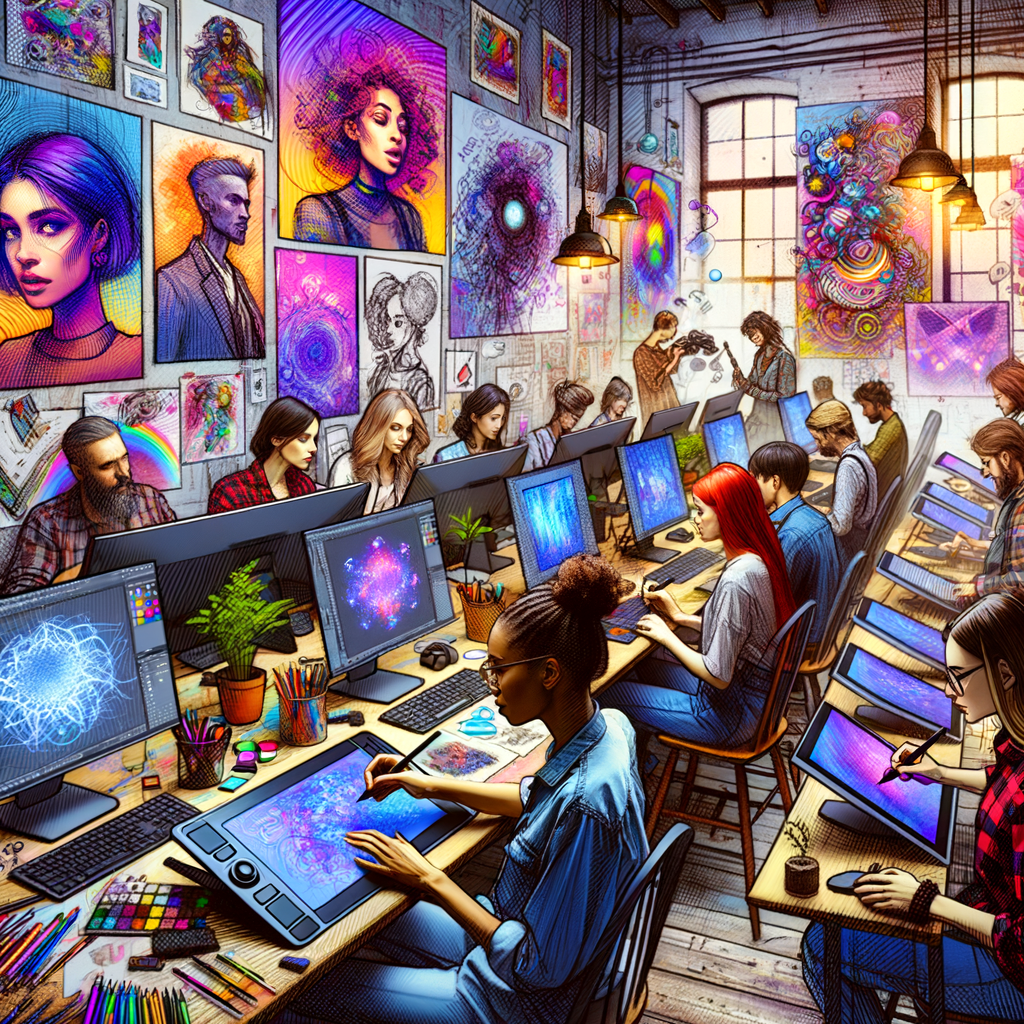
Digital art has transformed the way we create and experience art. With advanced technology and a variety of tools available, artists today have limitless possibilities for expression. This article delves into essential techniques, helpful tools, and practical tips that every aspiring digital artist should know. Ready to embark on your artistic journey? Let’s dive in!
In recent years, digital art has surged in popularity, attracting creatives from various artistic backgrounds. As technology continues to evolve, so do the tools and techniques available to artists. In this comprehensive guide, we aim to equip you with the knowledge you need to create captivating digital art.
Understanding Digital Art Software
The first step in your digital art journey is choosing the right software. There are many options available, each with unique features that cater to different artistic styles.
1. Adobe Photoshop
Photoshop is arguably the most popular software for digital painting and photo editing. It offers a wide range of brushes and tools, allowing for both detailed artwork and simple sketches. The learning curve may be steep for beginners, but countless tutorials are available online to help you get started.
2. Corel Painter
Corel Painter is designed specifically for digital painting. It mimics traditional painting techniques, making it ideal for artists looking to replicate real-world textures. The software includes a variety of brushes that simulate oil, watercolor, and other paint types.
3. Procreate
For iPad users, Procreate is a fantastic choice. The app is user-friendly and offers a plethora of brushes, layering options, and tools for creating stunning digital art on the go. Many artists appreciate its intuitive interface and responsiveness.
4. Krita
Krita is an open-source alternative that is gaining popularity among digital artists. It provides an array of tools and supports advanced workflows, making it suitable for both beginners and professionals. Its vibrant community also contributes to a wealth of resources.
Mastering Digital Painting Techniques
Once you've chosen your software, it's vital to understand the key techniques for digital painting. Here are some essential skills to develop:
1. Brush Techniques
Understanding how to effectively use brushes is fundamental to digital painting. Experiment with different brush settings, sizes, and opacities to achieve the desired effects. Layering colors and textures can add depth to your artwork.
2. Color Theory
Color plays a crucial role in digital art. Familiarize yourself with color theory principles, such as complementary colors and color harmony. Experiment with color palettes to evoke specific emotions and enhance your compositions.
3. Lighting and Shadows
Incorporating realistic lighting and shadows can elevate your artwork. Practice observing light sources and how they affect objects in your scenes. Use shading techniques to create depth and dimension in your pieces.
4. Composition
A strong composition can make or break your artwork. Study the rule of thirds, leading lines, and focal points. Consider how the arrangement of elements guides the viewer's eye and creates a sense of balance in your art.
Tools and Equipment for Digital Artists
In addition to software, having the right tools and equipment can significantly enhance your digital art experience.
1. Graphics Tablets
A graphics tablet is an essential tool for many digital artists. It allows for precise control when drawing and often includes pressure sensitivity, which adds a natural feel to your strokes. Some popular options include:
- Wacom Intuos
- Huion Kamvas
- XP-Pen Artist Pro
2. Styluses
Pair your graphics tablet with a high-quality stylus for improved accuracy and comfort. Some styluses are equipped with customizable buttons for quick access to your favorite tools.
3. Monitors
Investing in a high-resolution monitor can impact your digital art significantly. Look for displays with vibrant colors and a wide color gamut to ensure your artwork looks stunning.
Tips for Improving Your Digital Art Skills
Improving as a digital artist takes time and practice. Here are some tips to help you on your journey:
1. Take Online Courses
There are numerous online platforms offering courses specifically for digital art. Websites like Skillshare, Udemy, and Coursera provide structured learning experiences that can help you master various techniques.
2. Seek Feedback
Joining online art communities can provide valuable feedback on your work. Engage with other artists to share tips and critiques, which can help you grow and refine your skills.
3. Create a Routine
Establishing a regular practice routine is essential for improvement. Set aside time each day or week for drawing and experimenting with new techniques.
4. Challenge Yourself
Participate in art challenges or prompts to push your creative boundaries. These challenges can spark fresh ideas and help you learn new styles and techniques.
Inspiration and Artistic Growth
Inspiration can come from many sources. Here are some strategies to keep your creativity flowing:
1. Art Challenges
Engaging in art challenges on social media platforms can motivate you to create regularly and explore new themes. Consider participating in events like Inktober or Draw This In Your Style.
2. Study the Masters
Analyzing the work of established artists can help you understand different styles and techniques. Try to recreate some of their artwork to learn their methods and approaches.
3. Experiment with Mixed Media
Combining digital art with traditional methods can lead to exciting results. Experimenting with different techniques can help you discover your unique artistic voice.
4. Keep a Sketchbook
Maintain a sketchbook to jot down ideas, sketches, and concepts. Regular sketching can enhance your observational skills and serve as a reservoir of inspiration.
Conclusion
The world of digital art is vast and full of potential. By understanding the various tools and techniques available, as well as continuously practicing and finding sources of inspiration, you can improve your skills and find your unique artistic voice. So grab your tablet, dive into the digital realm, and let your creativity flow!
Whether you’re just starting or looking to refine your craft, remember that art is a journey, and every stroke brings you closer to your goals.

